WORD NEWS
Chai is tea, tea is chai: India’s favorite scorching drink | Fork the System
I bear in mind leaping as much as sit on the kitchen counter one afternoon. My five-year-old self desires to observe my mom making chai. She pushes me away from the fuel range however I’m indignant and refuse to hop down, though I do transfer away a bit.
The water bubbles. She provides sugar, then takes a flat metal grater, balances it on the sting of the pot and grates in adrak (ginger).
“Why can we add this?” I ask, watching the shreds fall into the effervescent water.
“Little one, I’ve to rush I don’t have time in your questions,” she says. I sulk however I do know that, being a health care provider, she has to get to the hospital on time. I’ll ask grandma, I inform myself.
The ginger threads dance within the water. Then she provides the tea leaves, turning the contents of the pot brown. Stirring, she provides milk and lets it simmer over a low flame, nonetheless stirring. After a couple of minutes, she removes it from the warmth and covers it. I hop down to observe the following step. She strains it in cups, places them on a tray, and carries it to the eating desk.
I run out. I’ve no real interest in tasting it however am proud, boasting to my associates: “I understand how to make chai.” By the tip of the day, I’ve memorised the method endlessly.
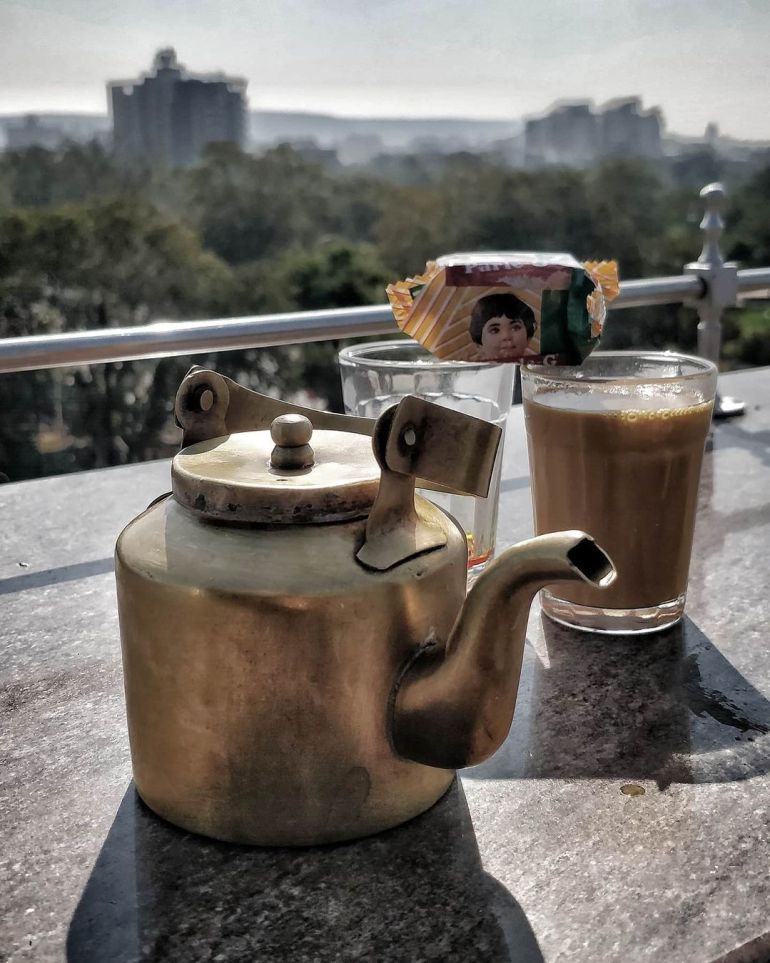
I don’t need to ask to style it as a result of I do know if I do, she is going to dilute it with extra milk. “Kids shouldn’t drink tea,” she would say. I hated that pale milky liquid.
The primary time I tasted actual chai, I used to be in grade three. I had scored good marks on a maths check and ran house that August afternoon to share the information with my mom and grandparents as they have been having their chai. Basking within the appreciation and pats on my again, I requested if I may have chai. Mom refused, however grandfather smiled and poured some right into a cup. I took it and breathed the aroma in deeply. I took one sip, then the second. The creamy, wealthy beverage warmed my coronary heart and spirit and at that exact second, I turned a chai lover.
I yearned to make chai however wasn’t allowed. “What should you spill the boiling water and get burned,” my grandmother would fret. Lastly, after I was in grade 5, she reluctantly allowed me to make it beneath her supervision and shortly I used to be making it alone.
I felt so achieved, measuring water, grating ginger, and scooping sugar and tea leaves so as to add to the boiling water. Watching the tea leaves spinning with the ginger. Then including the milk and watching it lighten the chai and simmer, steeping the flavours. “An excellent cup of chai wants a sluggish hearth,” I used to be advised, one thing I observe to at the present time.

Quick ahead a number of years, and I’m on my approach house on a bitterly chilly January night in Indore. The solar is on depart and the wind drills into my bones. I enter a silent, chilly house – my mom isn’t again from the hospital but and my grandmother has moved to stay with my uncle since my grandfather handed away.
I would like chai. Quickly, I’m sitting with a scorching, steaming cup, sipping it slowly. I shut my eyes, savouring the candy milk, sharp ginger and cinnamon. By then, I used to be experimenting with spices and including what felt proper in the intervening time – cinnamon, fennel, inexperienced cardamom and extra. I might add lemongrass, holy basil and peppercorns if I had a chilly or sore throat.
Chai is tea, tea is chai
Chai in India is a drink for no cause and for each cause, morning, afternoon, night and evening. It lifts your spirits whereas learning for the maths paper or studying chemistry formulation. It spices school gossip and followers rumours. A welcoming or parting drink, to persuade family and friends to remain longer to share extra tales.
It brings everybody collectively. It’s served in properties, board conferences, school canteens, cafes and at weddings. “Chalo chai ho jaye,” (Let’s have tea) is heard daily.

Tea is chai in India. When, the place, and the way the primary cup of chai was brewed continues to be up for debate, however the tales from our elders give us an concept concerning the evolution of this scrumptious, addictive beverage.
Prerna Kumar, founding father of ChaiVeda and purveyor of medicinal blends, says: “The early reference to tea is discovered within the Buddhist texts the place the monks drank some form of tea whereas fasting and meditating.
“They made tea from foraged tea leaves and maybe added sure flowers to the decoction to assist them really feel calmer.”
However how did tea change into chai and provides delivery to chaiwallahs (chai sellers) and chai drinkers?
I bear in mind sitting with my grandfather and a historical past e-book in grade 10. He may make historical past dance in entrance of your eyes however I wasn’t smitten by that day’s lesson. It wasn’t about kings or queens or battles, however the uninteresting historical past of the on a regular basis drink. How attention-grabbing may it’s?
Grandfather pushes the e-book away and tells me to only pay attention.
“Tea,” he started, “comes from China.”
With that, he launched a historical past lesson replete with scenes of Britishers consuming tea, tea merchants at seaports and expansive inexperienced tea plantations in Assam.

The English have been launched to tea when the Dutch East India Firm started to import it into Europe within the seventeenth century, and its recognition progressively grew. By the 18th century, the English East India Firm was importing sufficient tea from China that it was thought of one of many firm’s principal belongings. However there was fear over China refusing to resume the English commerce monopoly and a seek for alternate options started.
English botanist Sir Joseph Banks steered that the English in Assam develop tea there in 1778 after it was found that the Singpho tribe in Assam and Arunachal Pradesh drank a wild tea plant. However there was little curiosity till China broke the monopoly in 1833; two years later, tea rising in Assam started, meals historian Mohsina Mukadam from Mumbai elaborates.
The Assam Tea Firm was shaped in 1839 and began advertising and marketing in Europe. Tea wasn’t a extensively identified beverage in India and it wasn’t till the beginning of the Nice Melancholy in 1929 that the corporate appeared on the Indian market to maneuver its perishable inventory, Mukadam added.
They began obligatory tea breaks in factories; tea-making demonstrations in markets and in properties the place ladies may watch from the purdah (a screened enclosure); movie screenings in villages to dole out free tea samples. Free tea on the acquisition of saris. Tea offered at railway stations. However tea nonetheless wasn’t turning into as in style as hoped.
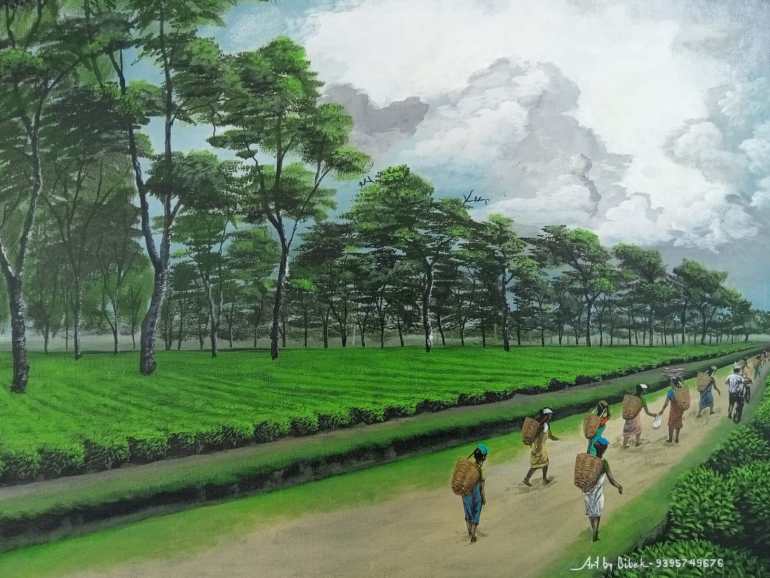
“The British have been overconfident about altering our meals habits,” grandfather smiled. Indians have been cautious of this new beverage. “We took it, added spices, milk, and sugar, reworking tea-making endlessly.”
Now I’m utterly fascinated with the tea lesson.
Creator and chef Sadaf Hussain, a lover of meals historical past and tales, tells me later: “Britishers gave us the behavior of tea however … we Indianised the recipe to swimsuit our style.
“We have been used to consuming ‘kadha’ [herbal decoctions] for ages and we innovated tea into one thing comparable by utilizing spices, milk, and sugar. The addition of milk was … to extend the amount as tea leaves have been costly and, India being an agricultural nation, milk was simply obtainable.”
At this time, India is the most important shopper of tea on the earth, the second-largest producer and the fourth-largest exporter. In keeping with Tea Board India, the nation produced 1.34 million tonnes of tea in 2021, about 80 % of it for home consumption.
Masala chai
Fundamental masala chai is tea boiled in a mix of milk, water, sugar, and all or any spices, like cardamom, cinnamon, clove, ginger or black pepper.
Each household has a particular chai recipe. “Some like a gentle model, others get pleasure from it sturdy,” chai-making is private, Sadaf says. Some like ginger or cardamom, or each or neither, he explains.
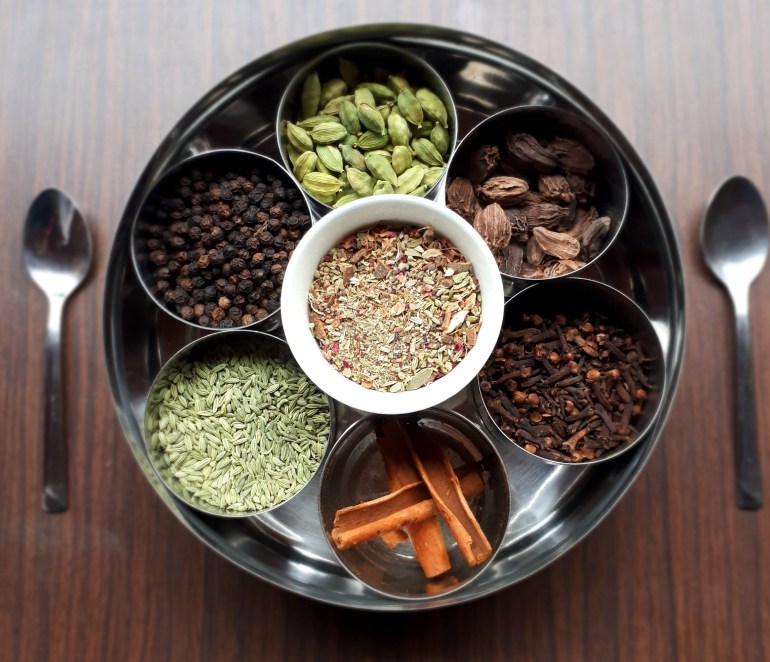
“There are round 20,000 substances which were added to tea all over the world,” shares Prerna. “It’s mind-boggling … Something that may be added to meals will be added to tea.”
Masala chai can embody herbs, spices and flowers – black pepper, cardamom, cinnamon, cloves, fennel, ginger, holy basil, liquorice, nutmeg, rose petals and extra. The most effective chai is impressed by the masala dabba (field of spices), a quintessential presence in Indian kitchens. Ginger and black pepper are good for digestion and warming. Cloves, with their antiseptic properties, are good for sore throats and cardamom can elevate your temper.
I’ll always remember my Mumbai neighbour Sumathy Aunty’s masala chai. A brand new bride, I had reached Mumbai early that morning and was taking my stuff upstairs when the house subsequent door opened and a girl draped in a sari dashed out, smiling over her shoulder in the way in which folks in Mumbai do when they should get someplace. I used to be new to Mumbai and wasn’t conscious of what a feat it was to catch the trains crisscrossing town. Each second counted and will delay you. That night round seven, Sumathy Aunty knocked and requested me over for tea. What blossomed thereafter was a singular friendship between me, just lately married and in my early twenties, and Sumathy Aunty, who was in her late fifties.

We’d sip chai with farsan or chivda (fried lentil and flat rice spiced snacks) and typically, on wet days, I might make mangodis (spiced lentil fritters), a speciality of central India, the place I’m from. We exchanged recipes and cooking ideas from our house states and she or he shared life expertise to outlive in Mumbai, a metropolis that, for a small-town lady like me, was fairly anxious.
Her chai was a caramel brew that at all times made me crave extra. It had ginger, fennel seeds, cardamom and lemongrass, however there was extra to it. When requested how she acquired it to style this manner, she attributed it to a mantra she chanted.
No two chais are the identical, even the method and the mindset of the individual making chai play an enormous position, in accordance with Prerna. “My husband is ready to discern a distinction if I’m sad with him for some cause whereas making tea,” she laughs.
Making chai
Right here’s a simple, fundamental chai recipe.
Deliver a cup and a half of water to a boil in a stainless-steel pot, then flip the warmth down so the water simply simmers. Add in about an inch of ginger, grated, and a teaspoon of chopped lemongrass, a pinch of cinnamon and two teaspoons of sugar. If in case you have another spices you need to put within the water because it boils, go forward, selection is certainly welcome, because the chai map of India exhibits.
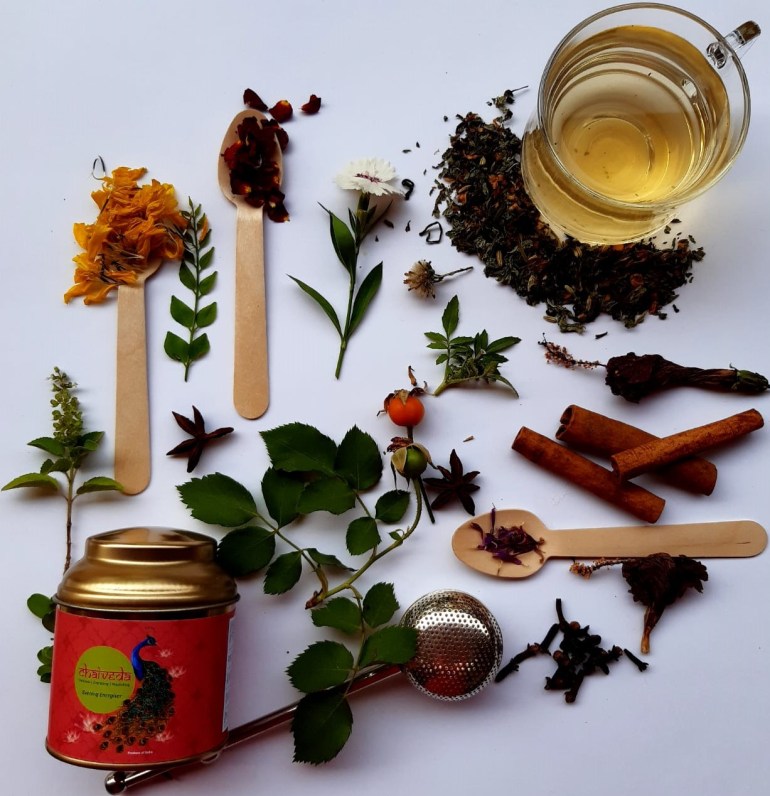
Let the combination simmer away for a couple of minutes then drop in two teaspoons of black tea leaves.
As soon as the water darkens, add a cup of complete milk slowly, stirring the entire time till it begins effervescent once more. To aerate your chai, take ladlefuls of the combination and, lifting your hand a few foot above the pot, pour it again in. After a couple of minutes of aerating, flip off the warmth and canopy the pot to let the chai relaxation a bit. Then pressure it into teacups and luxuriate in.
‘Should you’re Indian, it’s essential to like tea’
South India has been a espresso stronghold for a few years however issues are beginning to change as the common-or-garden chai made its approach into folks’s hearts and chai outlets serving a spread starting from ginger to masala and lemon maintain pleasure of place together with “Kumbakonam espresso” homes, author Chandrika R Krishnan shares.
“Not too long ago, a newly opened tea store within the suburbs of Chennai sported an indication: ‘Tea is liquid knowledge,’” she says, “and why not, wanting on the regular footfall it skilled,” she provides.
Shifting north, “In Previous Delhi, Bhopal [central India] and Lucknow [northern India], nobody asks if you should have tea, however simply supply it. If you’re an Indian, it’s essential to like tea and cricket,” laughs Sadaf.
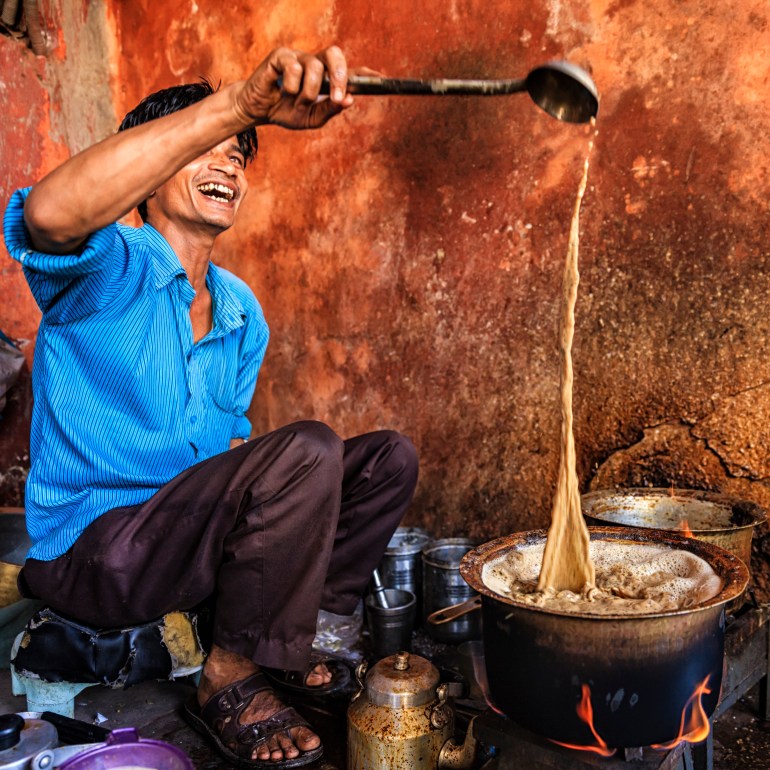
Sadaf conducts meals walks in Delhi that begin from a tea store close to the Jama Masjid in Previous Delhi that serves a singular chai. Right here the milk is boiled individually from the tea and water, simmered till it thickens and sweetens to a degree the place sugar turns into elective.
To serve, the tea is poured first right into a kullad (a particular clay cup for tea) after which topped with thickened milk. Now, connoisseurs will let you know that chai in a kullad is one thing to stay for, that tea and cup meet as long-lost associates. The kullad absorbs the tea and the style of the clay mingles with the recent chai, imparting an earthy, smoky flavour.
In Bhopal, a well-known golden chai is served, made with solely milk. Right here too, full-fat milk is boiled till it reduces to lower than half, then cardamom and tea leaves are added to it. No sugar is added to this chai because the creamy milk releases its pure sugars, including layers of flavour.
In Lucknow, there’s a well-known chai store referred to as Sharmaji Chai Wale that at all times has lengthy queues in entrance of it and is understood to maintain going until the wee hours, so you may at all times get a chai and bun maska pao (buttered buns). “It has change into a norm now, many outlets in Lucknow are promoting bun chai, a superb, fast meal,” Sadaf says.

Lucknow has additionally embraced midday (salt) chai, a beloved chai from Kashmir made with inexperienced tea leaves, salt and baking soda, which turns the drink pink, particularly when milk is added. Dropped at town with Kashmiris who moved there, midday chai initially had a tough time as a result of Lucknowites didn’t like its salty flavour. However quickly new Lucknow-Kashmiri chai recipes developed that omitted the salt and stored the baking soda, dubbed gulabi (pink) chai.
Common gulabi chai is stored scorching in a samovar (a conventional copper double-decker teapot used to brew, boil and serve midday chai) and served in a kullad.
Then there’s the biscuit possibility. On this overly-sweet model, a puff pastry biscuit is positioned on the backside of the cup and scorching tea is poured over it, making the biscuit mushy. You get a spoon to stir the mushy biscuit round and eat it like breakfast cereal.
Gujarat within the west is fairly well-known for its chai as properly, in accordance with Prerna who describes an extra-milky, extra-sweet chai – however not pink – made with dried ginger and cinnamon that pairs completely with spicy fried snacks.
Even northwesterly Punjab – a state well-known for milk and lassi (a churned yoghurt drink) – has a 24-hour tea store at The Golden Temple in Amritsar.
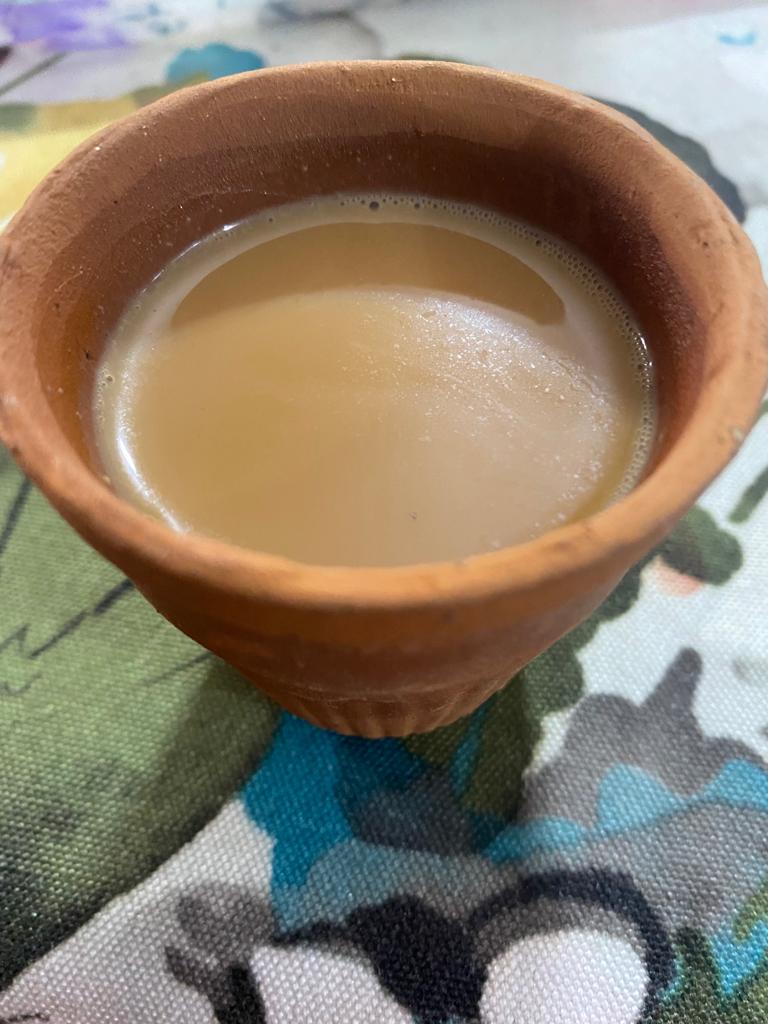
In Bihar within the northeast, chai is served in a small conical cup that may solely maintain two mouthfuls referred to as a kapti, which Sadaf says comes from two phrases – cup and tea.
Chai on the highway and rails
Why is the chai offered in tapri (roadside chai stalls) extra scrumptious than the chai ready at house? Presumably due to the expertise that accompanies it.
There’s “500-meel (500-mile) chai”, a roadside favorite I encountered a number of years again on my approach from Meerut to New Delhi with a gaggle of faculty classmates. We stopped at a roadside dhaba for dinner that late December evening, the chilly wind chopping by means of to our bones, so we sat savouring chai whereas ready for our meals. A truck stopped and two drivers jumped out and ordered a 500-meel chai. Intrigued, I requested the dhaba proprietor what that was.
He advised me it’s a sturdy, candy brew that helps late-night truck drivers go “for one more 500 miles”, so we determine to strive it. It’s certainly candy and robust, with its mix of spices, and it stored us unsleeping for the remainder of the journey.
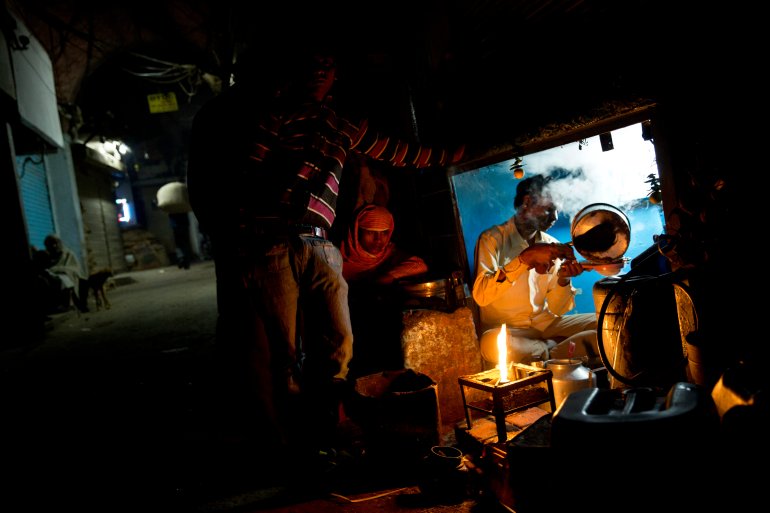
There’s additionally the reminiscence of relishing scorching creamy chai one January afternoon whereas procuring in a Delhi flea market. It had been a busy day visiting historic monuments as part of our school schooling as historical past college students.
Drained, chilly and hungry we gathered close to the chai stall and waited longingly for the recent brew. The seller stirred the chai, laden with sugar, tea leaves and spices because it bubbled and foamed. Then, holding his hand up excessive, he dexterously poured it into kullad.
Somebody purchased ram laddus from one other stall – mung lentil fritters served with grated radish, inexperienced chillies and chutney, a preferred Delhi avenue meals. I took a chew. The crunchy exterior gave option to the gentle mung bean coronary heart as chillies and garlic tantalised my style buds. I ate, craved and ate once more. In between, I sipped tea and my fatigue disappeared within the uninteresting, chilly afternoon.
Prerna says there are two different causes for the prevalence of roadside chai, “the excessive warmth on which the chai is made and fixed stirring of chai with a ladle, a scientific course of referred to as heat-aerating”.
The fixed stirring provides air to the combo, encouraging the spices and tea to combine and frothing the milk because the chaiwallah lifts steaming ladlefuls of it and pours them again into the pot, she explains.
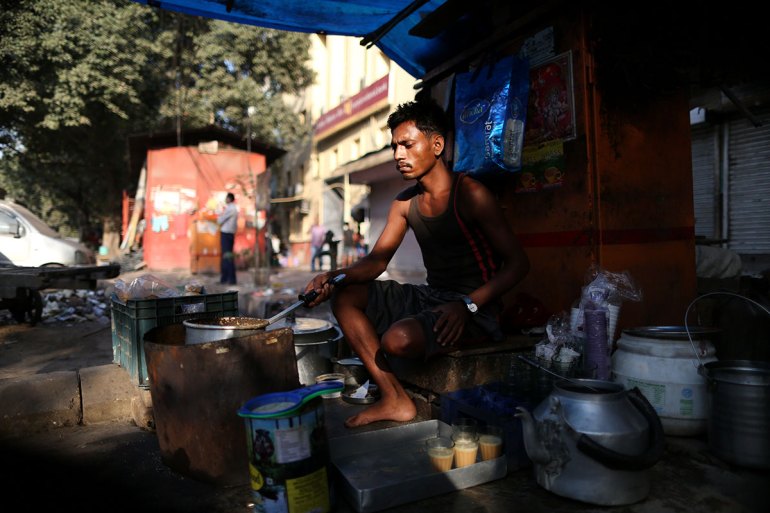
Chaiwallahs and practice journey are inseparable. I can always remember my “darkish evening of the soul” years in the past, a tragic journey after I needed to journey by practice alone, lonely, misplaced and scared, combating tears as a result of I couldn’t cry in public. Then I heard the hawkers’ chant of “Chai garam!” because the practice slowly chugged right into a station.
It was previous midnight, however I made a decision to get some chai in a conventional kullad. That evening, that scorching chai with ginger and a hint of cardamom, laced with thickened milk and sugar, consoled me. It turned my buddy endlessly, the sunshine on the finish of the proverbial tunnel. At this time, chai is my consolation drink at any time, season and for any temper.
Chai as celebration, chai as drugs
Centuries in the past, Indians had two meals a day: one within the morning or at noon, relying on the individual’s occupation and necessities, and early dinner, shares Prerna. That modified with time, and when campaigns to introduce tea into the Indian market began, so did the push to make breakfast into an even bigger meal with chai which, in fact, was inspired as an accompaniment to a day snack.
Chai will be loved alone, however it excels in firm. Small, candy plain biscuits are a should with chai and have been a scorching favorite for generations. Different choices embody cookies, toast and spicy fried snacks.
![Indian Chai wala [Showkat Shafi/ Al Jazeera]](https://www.aljazeera.com/wp-content/uploads/2016/10/cacb4a5b494d47c28359f00e39094e7d_8.jpeg?w=770&resize=770%2C513)
Scorching chai with samosas and pakoras (vegetable fritters) are the nation’s option to welcome the rains. Digging into crispy snacks and consuming scorching tea is a celebration of the senses. Nothing can compete with a samosa and chai mixture to make Indians blissful.
Meals habits in India have additionally been strongly dictated by Ayurveda, the traditional science of life. It’s so deeply ingrained within the tradition that on a regular basis recipes and even the assortment of vegetarian dishes – with out onions and garlic – ready for spiritual festivals and ceremonies are primarily based on Ayurveda.
“Tea, in accordance with Ayurveda, is extra of a medication”, Dr Rekha Radhamony, a fourth-generation Ayurvedic physician from Kerala, tells me.
“Tea is greatest taken with mishri (unrefined rock sugar),” the perfect sweetener for tea with milk, she says.
If tea is sweetened with jaggery – additionally an unrefined sugar that comprises extra molasses than mishri – milk shouldn’t be added as combining jaggery and milk is contraindicated in Ayurveda, she explains. She recommends including cardamom to all types of tea, which reduces the sharpness of tea and makes it digestible
You’ll be able to have tea with breakfast however don’t have it on an empty abdomen as it’d intrude with digestion. The perfect tea time is earlier than 4pm. Any later and it may disturb sleep, Rekha elaborates.

Daily is Chai Day
Might 21 was declared Worldwide Tea Day in 2019 by the United Nations, however daily is Chai Day in India.
Chai is chai due to its tales and infinite recipes. It’s a witness to conversations from the mundane to the life-changing. Individuals bond over a cup of chai, even strangers in trains and meals stalls on highways.
You hear attention-grabbing snippets about politics and parliament, information, nice locations to get pleasure from native meals, flea markets for discount buys and even options for monetary investments and tax planning.
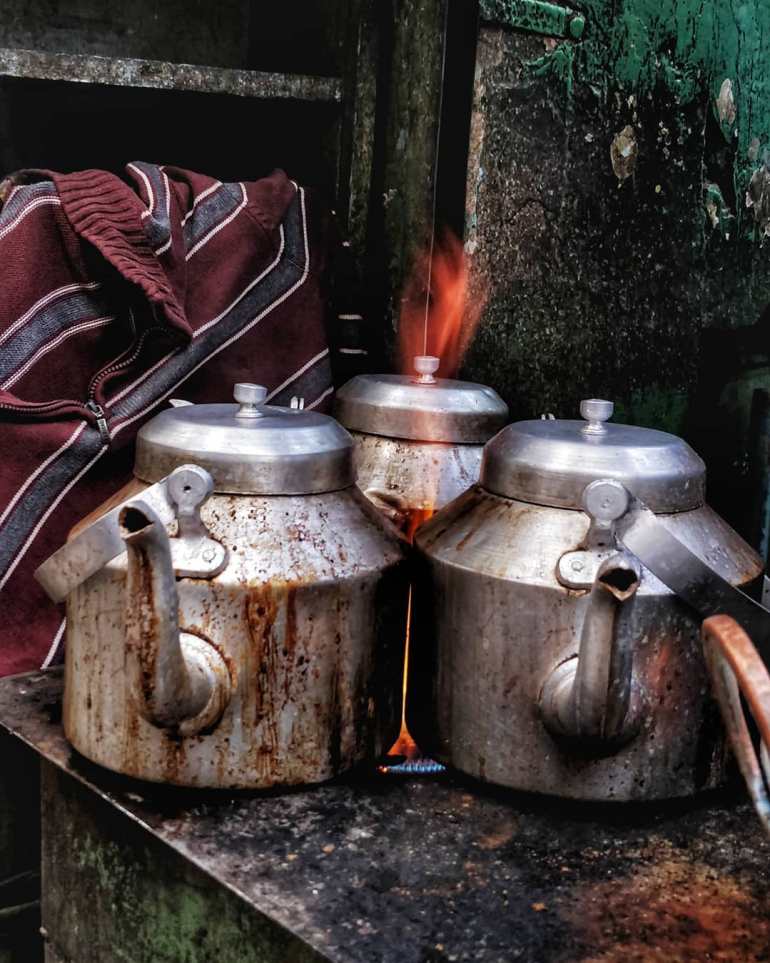
In a rustic the place the meals preparations change each “kos” (about three km), chai-making varies drastically between properties and even inside households. Chai recipes with tales from neighbourhoods, villages, cities and cities are an inseparable a part of the Indian id.
It’s heart-warming to carry a cup of scorching chai on a wet night and let the steam envelop your face. The fragrant liquid is a glimmer of hope in attempting occasions and provides pleasure to happier occasions.
Merely put, a cup of chai and a plate of samosas can elevate your spirits.
Trending
-
Bank and Cryptocurrency11 months ago
Cheap Car Insurance Rates Guide to Understanding Your Options, Laws, and Discounts
-
Bank and Cryptocurrency11 months ago
Why Do We Need an Insurance for Our Vehicle?
-

 entertainement5 months ago
entertainement5 months agoHOUSE OF FUN DAILY GIFTS
-
WORD NEWS12 months ago
Swan wrangling and ‘steamy trysts’: the weird lives and jobs of the king’s entourage | Monarchy
